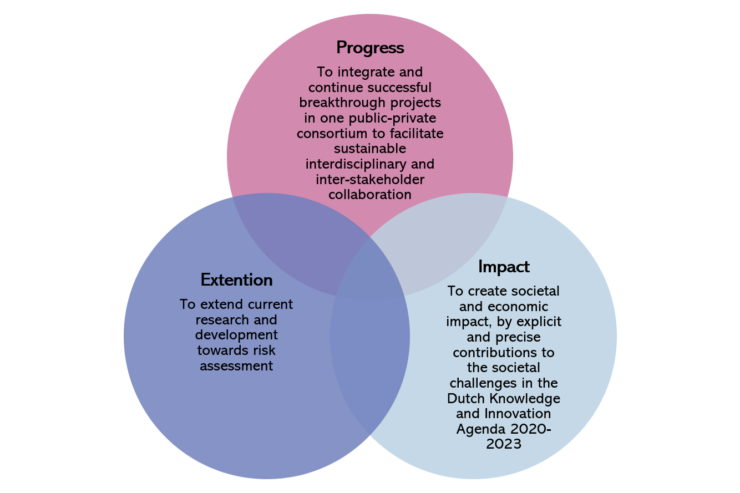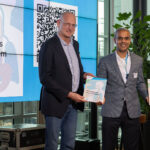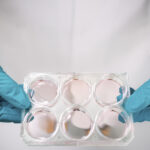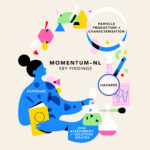Microplastics and Human Health Consortium
Plastic is everywhere around us. When we use plastic products, they break down into tiny particles called micro- and nanoplastics. These particles end up in our environment and also find their way into our bodies. Scientists have already discovered micro- and nanoplastics in our blood, lungs, placenta, and brains, but their effect on our health is still unclear.
MOMENTUM is a Dutch research project aimed at unravelling the impact of micro- and nanoplastics on our health. Over 25 partners are involved in MOMENTUM, including universities, research institutes, policy makers, industrial partners, and interest groups. Together, we are developing standardised materials and methods to measure microplastics and determine their behaviour and toxicity in human cells and tissues. We are also providing a foundation for risk assessment and identifying practical solutions to mitigate the potential health risks associated with microplastics.
How it started
In 2018, ZonMw initiated the first call for proposals in the Microplastics and Health programme, supported by the Topsector Life Sciences & Health (Health~Holland). As a result, 15 multidisciplinary breakthrough projects were granted, to jumpstart research in this new field. These 1-year projects started in Spring 2019 and finalised in the Summer of 2020. When funding the projects, it was acknowledged that one year is not enough, and continued research is crucial to answer the unsolved questions on possible health effects and solutions.

Goals
The overarching goal of this project is to build on the momentum gained in the ZonMW breakthrough projects and work towards a long-term public-private-partnership (PPP) that will ultimately form the Dutch National Research Infrastructure on MNPs and Health, using the ZonMW Knowledge Agenda on Microplastics and Health as a basis. Our project, aptly entitled “MOMENTUM,” integrates and accelerates the most promising research developments from fourteen ZonMw breakthrough projects. In co-creation with private sector organisations and in consultation with key stakeholders from academia, government, industry and citizen organisations, the research conducted in MOMENTUM aims to unravel the human health effects of MNPs (“problem analysis”) and to propose solutions to minimize their potential health impact (“solutions analysis”). MOMENTUM expands on the groundbreaking research of the breakthrough projects by further investigation of the potential human health risks following MNP exposure.
In particular, approaches will be developed to measure internal human exposure and further elucidate the kinetics of MNPs crossing internal barriers of the lung, intestine, brain and placenta. We will also continue our novel research on unravelling the immunological hazards of exposure to plastic particles and MNP-associated pathogens. We will go beyond the current ZonMw breakthrough projects by increasing knowledge on the formation and characterisation of MNPs, and by developing a roadmap to comprehensive risk assessment of MNPs. The innovations in MOMENTUM will form the basis for solution sets to minimize potential health risks, and a long-term R&D strategy lasting beyond the three year duration of the project.








